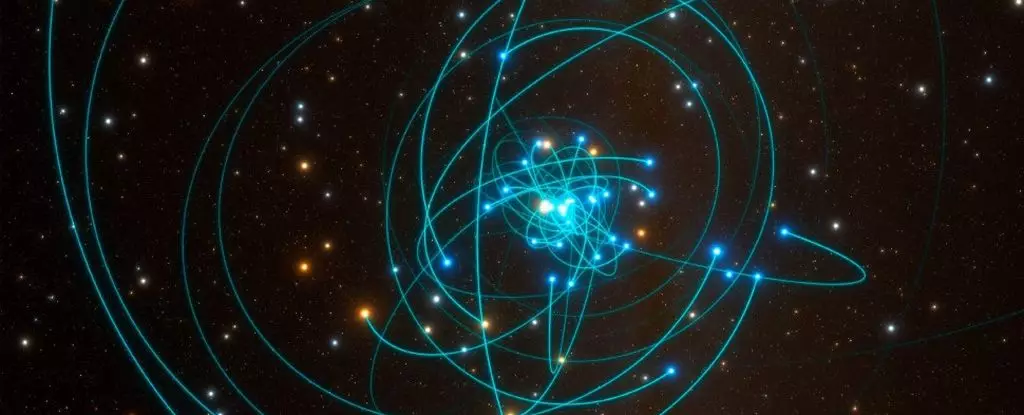The age-old quest for eternal youth and beauty has led to many extreme measures, even resorting to dark and macabre practices like blood baths. While such methods may not work for humans, recent studies suggest that stars in the Milky Way’s galactic center have found a rejuvenating secret through cosmic cannibalism. According to astrophysicists at Northwestern University, stars in this bustling region are much older than they appear, with their youthful appearance being the result of collisions and mergers that allow them to masquerade as rejuvenated, young-looking stars.
The galactic center is a chaotic hub of activity, with a massive supermassive black hole at its core and countless stars whirling around at incredible speeds. It’s a crowded space where star collisions are common due to gravitational interactions. Researchers liken the environment to a bustling subway station during rush hour, where stars either collide or pass closely enough to influence each other gravitationally. These interactions play a crucial role in determining the fate of stars in the galactic center.
Directly observing stars in the galactic center is challenging due to the dense clouds that obscure visibility. To overcome this limitation, researchers turned to simulations to model the interactions between stars in this region. They found that the fate of colliding stars is closely tied to their proximity to the supermassive black hole. Stars within a certain distance tend to survive grazing collisions, retaining their overall structure despite losing some material. However, when stars move more slowly and collide at larger distances, they merge to form larger, more massive stars.
The Paradox of Youthful Stars
While the process of collision and merger can give stars a more youthful appearance by increasing their hydrogen content, there is a trade-off in terms of lifespan. Massive stars burn through their hydrogen at a faster rate, shortening their overall lifespan. This phenomenon may explain the absence of old red giant stars in the galactic center, as the interactions between stars result in the creation of larger, short-lived stars. Further research is needed to fully understand the dynamics at play in this unique cosmic environment.
The study of stars in the Milky Way’s galactic center reveals a fascinating tale of cosmic cannibalism, where collisions and mergers play a crucial role in reshaping the stellar population. While the quest for eternal youth may take on different forms in the universe, the beauty secrets of stars provide valuable insights into the evolution of celestial bodies in our galaxy. As researchers continue to explore the complex dynamics at play in the galactic center, new discoveries and revelations are sure to enrich our understanding of the cosmos.


Leave a Reply